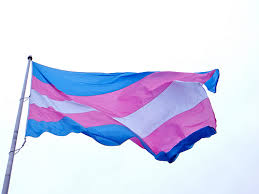Jonathan Merritt says that Christians need to get a clue about transgender issues and provides a useful introduction to gender identity issues and ways to think about gender theologically and biblically.
RNS:
This is not the first time transgender people and bathrooms have made the news. Critics of these cases cite the safety of women and children in bathrooms where “men” have access and claim that this is much ado about nothing considering that transgender people constitute an estimated .3 percent of the population.
Christians — particularly those of the more conservative variety — often oppose accommodations for transgender persons. But these believers are having a very important conversation in the wrong direction. When trying to understand transgender issues, Christians should start with the personal, not political. When Christians begin by committing to political goals rather than educating themselves on the complicated, sensitive nuances of this matter, they often come off looking privileged, mean or just flat-out clueless.
He interviews two Christian scholars who have thought deeply about sexuality and gender. Mark Yarhouse is a professor at Regent University School of Psychology and Counseling and author of“Understanding Gender Dysphoria: Navigating Transgender Issues in a Changing Culture.” Megan DeFranza is a visiting researcher at Boston University’s School of Theology and author of “Sex Difference in Christian Theology: Male, Female, and Intersex in the Image of God.”
Q: I’ve heard some conservative [Christian] thinkers root their thinking in the Genesis passage that says “(God) made them male and female.” Do intersex people challenge the traditional interpretation of that verse?
DeFranza: I used to say this myself — so I can relate with these conservative thinkers. But then I took a look at what Jesus says about Genesis and intersex folks in Matthew 19:12. I saw that Jesus didn’t speak of intersex as a problem or as a result of sin. Jesus speaks of three kinds of eunuchs: naturally born eunuchs (a category into which some intersex conditions fit), those who have been made eunuchs by others (a common occurrence in the Ancient Near East), and then praises those who “make themselves eunuchs for the sake of the kingdom.” It was pretty radical and took the church fathers centuries to convince us not to take Jesus literally (as many early Christians did) so that we now read that passage through the lens of monasticism.
Then I looked at Genesis again (keeping in mind Jesus’ treatment of folks who don’t fit into the category of Adam and Eve) and I realized that there are many creatures which are not named in the creation accounts which we do not consider “results of the fall into sin.” Amphibians — hybrid animals that are “creatures of the sea” and “creatures of the land” — are noticeably absent. Genesis 1 is a theological account of beginnings that was never intended to give us the whole story. Thankfully, we find help in other parts of the Bible to put together with this good beginning for a more complete picture.
Q: There are many people in the world who are biologically neither completely male nor female. How does this challenge a binary framework for understanding gender with rigid categories?
Yarhouse: I think there are many exceptions to an absolute male/female binary — intersex conditions, such as congenital adrenal hyperplasia, for example. Where I think people may disagree is whether such exceptions to the binary are indicative of a spectrum intended from creation or whether they are a result of living in a fallen world.
Q: Many Christians look at those who wrestle with their own gender identity and feel they are merely “choosing” their own category. But you emphasize that gender dysphoria is likely not a decision someone makes. Explain.
Yarhouse: I have not met anyone who chose to experience gender dysphoria. The people who see a mental health professional often experience significant gender dysphoria — it can exist along a continuum of intensity — and their distress is often what they are trying to manage through various coping strategies and cross-gender identification, dress or behavior.

